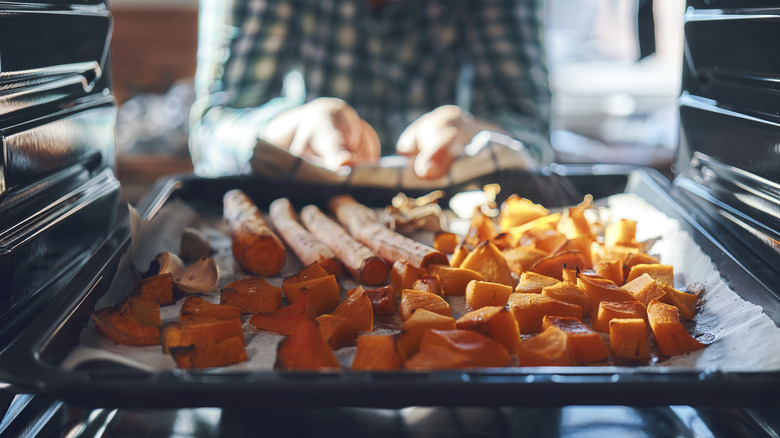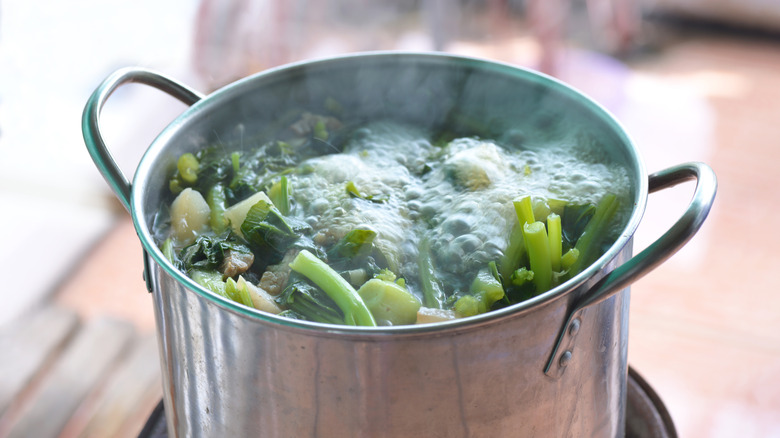How To Cook Vegetables At High Altitude
Depending on where you're chowing down, there are many differences in how to properly cook. But those living at high altitudes have to make one significant adjustment related to science — as opposed to taste or culture — when cooking vegetables: Adding more time.
First, it's important to be specific about what we mean by "high altitude." Most cookbooks and chefs set this line around 3,000 feet above sea level, though differences can be seen even around 2,000 feet.
Those cooking in this range should be aware of two vital changes. First, water will boil faster and at a lower absolute temperature. While we're all familiar with water's 212-degree Fahrenheit boiling point at sea level, this drops to 206 at 3,000 feet and 202 at 5,000 feet — roughly the elevation of Denver, Colorado, and several other cities in the Mountain West region.
This means any veggies or other items placed in boiling or simmering water are actually in lower-temperature liquid than they would be at sea level. Because of these lower temperatures, you'll need to add some extra time for them to reach the desired levels of tenderness.
The science of cooking at elevation
The reason high-altitude chefs have to make some changes is simple science — a combination of basic physics and chemistry. As elevation increases, air typically becomes drier while both oxygen levels and atmospheric pressure drop. This allows the heated water molecules to escape at lower temperatures, decreasing the boiling point. All of these issues can be avoided through the use of pressure cookers, which create their own sealed environment and can allow vegetables and other items to be cooked the same way at all elevations.
Vegetables aren't the only food that needs slightly different preparation at higher elevations. Altitude affects baking through similar temperature-related reasons and the properties of leavening gases, which expand faster and further at low-pressure in high-altitude locations. However, the solution, which can include both raising or lowering the oven temperature, will vary depending on the particular baked good. There are also some necessary tweaks when cooking a chicken dish at high altitudes.
While elevation-related changes may take a little extra attention and time, they shouldn't stop high-altitude chefs from boiling, baking, frying, or otherwise cooking their favorite veggies and other foods ... which are just as tasty no matter where you are.

